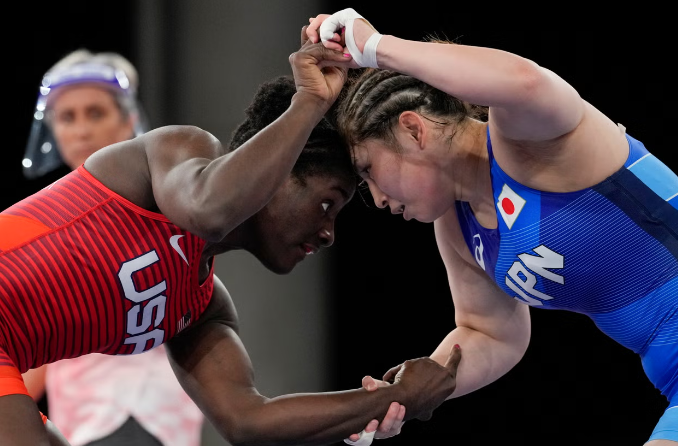Tokyo’s Wrestling Matches Highlight Intense Pandemic Precautions at Close Contact
As Olympic wrestlers grapple in close quarters, sweat and intensity aren’t the only things exchanged. With faces mere inches apart and bodies pressed together, these athletes face heightened health risks, especially as they compete mask-free in an environment where every other Olympic attendee follows strict health protocols. The Tokyo Games, held amid Japan’s rising COVID-19 cases and low vaccination rate, bring these concerns into sharp focus, turning wrestling into a metaphor for the wider struggle athletes face in balancing pandemic precautions with competition.
Brazilian wrestler Aline Silva, motivated by Brazil’s immense COVID-19 impact, hopes these Games remind people worldwide of the sacrifices needed to combat the virus. Silva chose to delay her Olympic preparations until she could train in a safe bubble, saying, “We need to do our part for everyone to survive. I might not die of COVID, but I don’t want to pass it on to someone who might.”
Every aspect of Olympic life, from strict mask protocols to isolated dining in sanitized cubicles, has been adjusted to safeguard athletes. Restrictions also reach the field, where sports like table tennis and boxing implement hygiene standards during play, while wrestlers — the most close-contact competitors — stand as symbols of the resilience and adaptability required for this unique Olympics.
Despite Tokyo’s rise in infections, the Olympic bubble has reported only minimal cases, thanks to constant testing. Finnish wrestler Elias Kuosmanen expressed confidence in the protocols, allowing him to focus on competing. “We’re tested all the time, so I am pretty sure that the opponents and everyone are COVID-19-free,” he said. In these unprecedented Games, Tokyo’s wrestlers show that with care and caution, even high-risk sports can be conducted safely.

